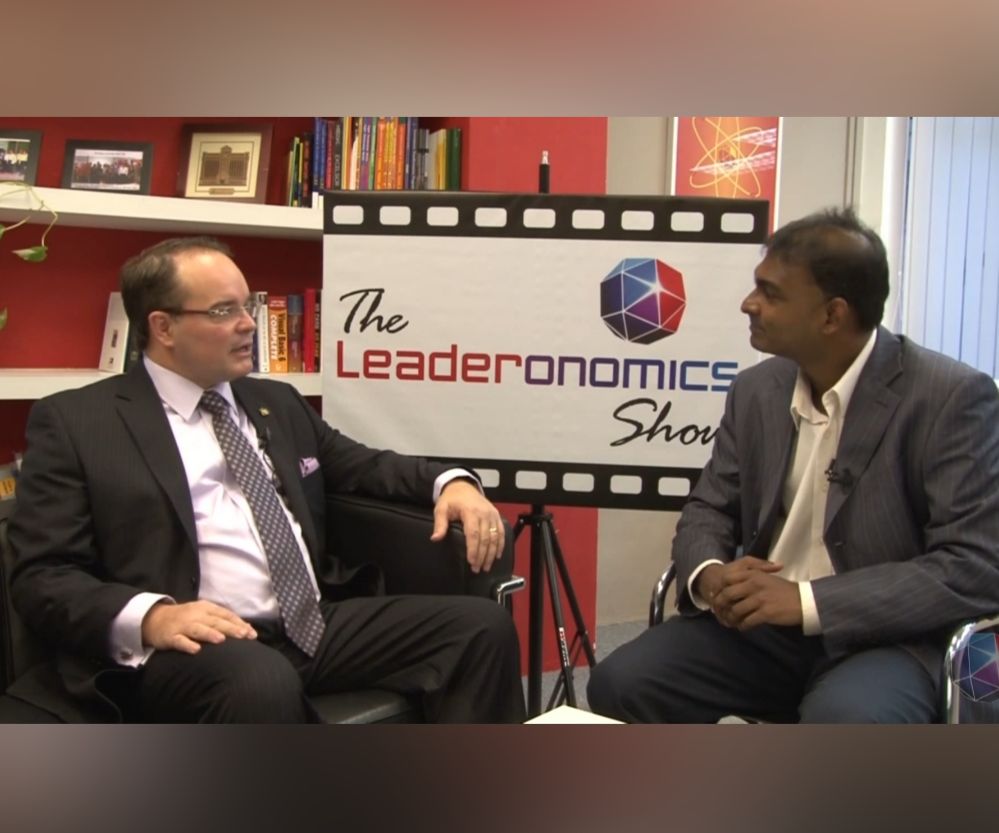10 Influencing Factors To Creating A Climate For Innovation

Rapid technological change, increasing global competition, and economic uncertainty all contribute to companies’ increasing interest on creativity and innovation. Companies need to be able to generate new ideas to fuel growth.
At the same time, they need to be able to increase both the effectiveness and efficiency of the innovation process.
While this is a difficult challenge, there is a great deal that business leaders can do to improve innovation.
One key way leaders increase innovation effectiveness and efficiency is by creating a climate of creativity, or a place where new ideas are invented and applicable innovation results.
Research and experience have shown that organisational climate is an effective predictor of creative performance and further, that creative people are especially influenced by climate.
A recent analysis of 42 research studies found several climate factors which significantly and positively impact creative performance.
This might interest you: Here’s To The Crazy Ones
Here, we will present 10 of the most important factors.
1. Challenging work
Making the work challenging means designing jobs and tasks that are demanding, complex, and interesting; yet, they must not be overly taxing or unduly overwhelming.
Challenging jobs are typically characterised by skill variety, autonomy, ambiguity, and frequent changes.
When jobs are complex and challenging, individuals are more excited about their work and interested in completing their jobs well.
Leaders can influence this factor through job design by injecting enough complexity and variety into the job to keep things interesting and by setting challenging goals for the workgroup.
2. Intellectual stimulation
Intellectual stimulation means encouraging open and honest debate and discussion of ideas.
Creativity flourishes in work environments where meaningful exchanges take place around significant issues and ideas. This kind of debate takes time, focus, and interaction in both formal and informal settings.
In today’s virtual workplace, a controversial policy might be required to create this type of environment.
Marissa Meyer was frequently criticised when she rolled back Yahoo’s work from home policy.
However, she stuck to her decision saying employees are:
“more collaborative and innovative when they’re together. Some of the best ideas come from pulling two different ideas together.”
3. Positive interpersonal cohesion
Creativity also flourishes in climates where employees perceive a sense of togetherness and cohesion and an absence of emotional conflict.
Collectivistic cultures where employees identify more as team members working toward shared goals also foster greater positive interpersonal cohesion.
Fostering positive interpersonal relationships can be difficult when you must also encourage open debate.
It is important for the leader and group members to acknowledge the need to debate ideas and issues while, at the same time, being careful that the debate does not erode positive interpersonal cohesion.
Continuing to have open conversations may even improve interpersonal cohesion.
4. Trust and safety
Research and practice clearly show that a climate of trust and safety facilitates creative performance.
Global innovation expert Charles Day says that “the fuel of trust is transparency.”
Transparency doesn’t necessarily mean telling everyone everything, but it does mean being as open as possible with employees.
This includes also being open about what you do and don’t know, as well as, what you can and cannot share.
Building trust also means showing you trust your employees.
Even as Netflix has grown and become a successful public company, it has not implemented formal time off or time and expense policies.
Instead, it trusts employees to use their common sense and make decisions in the best interest of the company.
This climate of trust helped Netflix grow to over 25 million United States subscribers and triple their stock price in 2013. Indeed, creating a climate of trust must go beyond policies and posters on the wall.
5. Flexibility and risk-taking
Encouraging flexibility and risk-taking means being comfortable with the uncertainty that comes along with creative work.
Organisations that embrace the knowledge gained from errors have a competitive advantage over those that ignore or punish failure.
Leaders must clearly communicate through word and action that errors are to be learnt from and they must present opportunities to learn and improve.
IDEO, the innovation powerhouse, shows support for risk-taking in a company slogan:
“Fail often to succeed sooner.”
Harvard Professor Rosabeth Moss Kanter points out that flexibility is also key in innovation efforts.
For example, Honeywell set up a venue for divisions to present their best innovation ideas during quarterly budget reviews.
However, none of the budgets contained funds for emerging ideas. Thus, the leaders were forced to fund projects by finding cost savings in other areas.
In contrast, IBM has set up a US$100mil innovation fund to support new ideas which might emerge during the year.
Recommended for you: Purple Rain: 3 Leadership Lessons From Prince On Innovation
6. Autonomy
Providing employees with autonomy in doing their jobs is another important aspect of a creative climate.
Decades of research on innovation clearly demonstrates that innovators prefer the freedom to be self-directed and independent.
Innovation author and researcher Scott Anthony observed that in the 1950s and 1960s, the most successful innovators chose to work autonomously outside of the bureaucracy of large companies.
Today, large corporations (e.g. IBM, Medtronic, Unilever) are creating so-called “corporate garages” allowing innovators autonomy in their work while still enabling them to draw on the overall resources of the organisation.
7. Mission clarity
Mission clarity is another critical aspect of a creative climate that can be highly influenced by the leader.
Academic and applied research clearly shows the importance of setting forth a clear mission and engaging innovators in that endeavour.
The first step is often called “problem identification” and has been shown to be highly correlated with creative production and solution generation.
Because the leader typically has the most comprehensive viewpoint, his or her input in problem identification is vital.
The second step in creating mission clarity is to make clear strategic decisions that set the context for innovation.
These decisions send strong signals about the company’s strategic direction and the competitive landscape.
Bain and Company in a 2013 study found that setting clear, specific innovation goals and models was the single most important factor dividing top performing innovative companies from weaker performers.
They suggest that creating passion for the mission by capturing the hearts and minds of innovators is also an important part of this factor.
Leaders need to ensure that innovators are given a clear, compelling, and aspirational mission that challenges the mind and engages the heart.
8. Commercial emphasis
Promoting a strong balance of practicality and originality is another important aspect to creating a climate for innovation.
A solution that is original but not relevant or effective is of little use to the organisation. Likewise, some solutions are practical and effective but not original.
Those solutions may work in the short term, but they are not innovative. Thus, they are easily replicated and do not represent sustainable competitive advantage.
This is why “blank slate” brainstorming doesn’t work as well as expected. Putting practical constraints on brainstorming has been shown to yield better results.
Check out our interview with Professor Langdon Morris on The Leaderonomics Show, a globally recognised leader in the innovation space:
9. Resources
Just as innovation is a risky endeavour, it can also be costly.
Innovators need to perceive that the organisation is willing to invest the time and money necessary to support innovation and implementation of these efforts.
Leaders need to purposefully plan for flexibility in budgets and in time allocation to encourage innovation.
3M’s policy allowing its engineers to take 15% of their workweek to focus on independent projects has yielded such innovations as the Post-It Note.
Lavish spending on innovation is not required and it can actually be detrimental to the team’s climate for innovation.
Research has shown that an overabundance of resources can lead to complacency and that some limitation of resources leads to resourcefulness which drives innovation.
This same idea holds true for time resources as the leader must allow adequate time for innovation but also be able to make a call about when to “shelve” an idea that is not currently viable.
10. Leadership support
Finally, innovation teams must believe that their efforts are important to top management.
The innovation team leader can influence this factor greatly by serving as a conduit between the team and more senior leadership.
The leader must sell the importance of innovation efforts to more senior leaders and communicate them to the innovation team.
While leadership support for innovation is important overall, it is most important in the testing and implementation stages of the innovation project when resource needs become less predictable and organisational patience wears thin.
Conclusion
Research and practice clearly show the strong positive impact that climate can have on creativity. The positive linkage between these climate factors and performance are applicable across a wide variety of work environments.
By definition, one cannot guarantee a successful innovation project.
However, as we have discovered, there are many factors that can ensure a climate that fosters creativity and leads to profitable innovation.
Daniel Russell was a faculty trainer at Leaderonomics specifically focused on talent management and strategic HR programmes. He has written white papers and book chapters on leading innovation, training and development, talent acquisition, HR technology, and employee engagement. To engage with Leaderonomics, email info@leaderonomics.com.
Leadership
Tags: Foundational Leadership
This article is published by the editors of Leaderonomics.com with the consent of the guest author.






